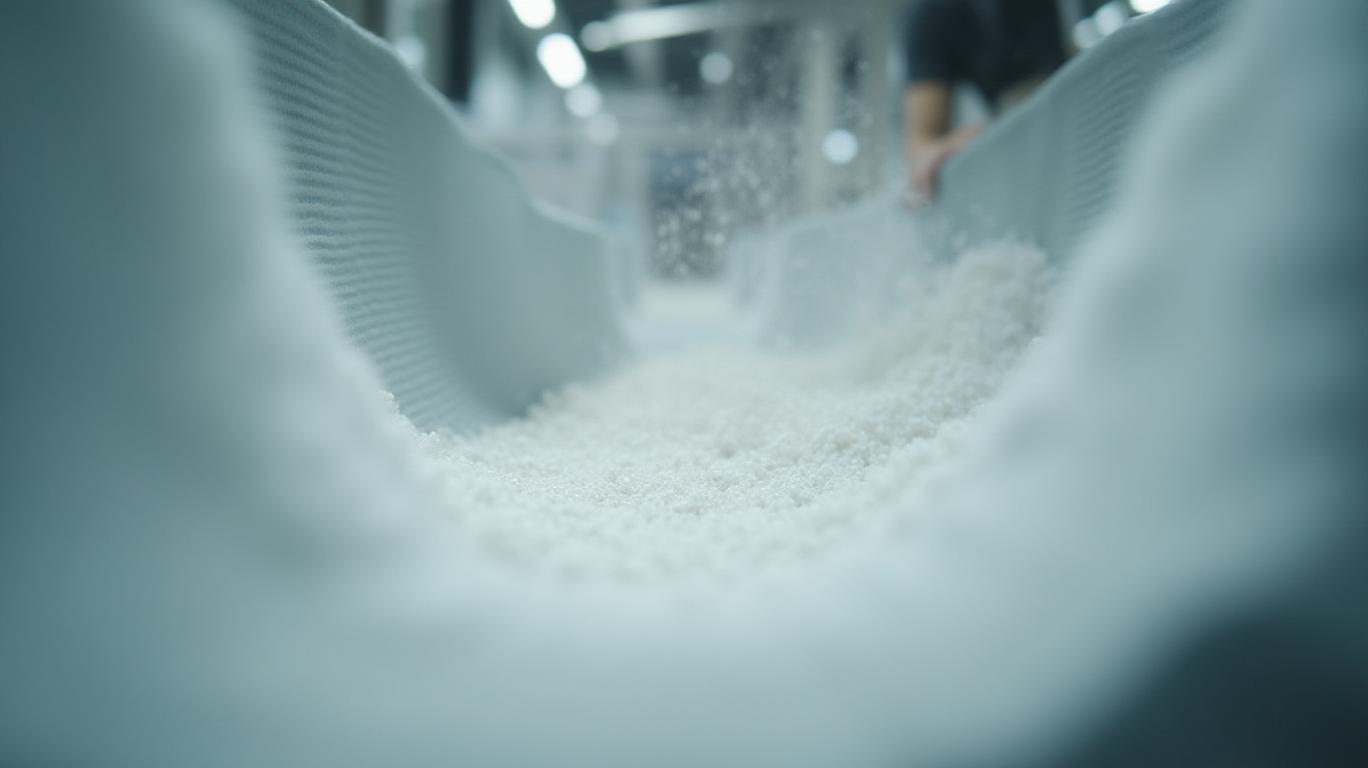Lenzing AG's Q1 2025 Results: A Turnaround Anchored in Resilience
Lenzing
, the global leader in sustainable fiber production, has delivered a strong first-quarter performance, marking a decisive shift from recent struggles to renewed profitability. The company reported €690.2 million in sales, a 4.8% year-on-year increase, while net profit surged to €31.7 million, reversing a loss of €26.9 million in Q1 2024. This turnaround, driven by cost discipline and strategic gains, positions Lenzing as a resilient player in a volatile market.
Financial Performance: A Resurgence in Margins and Profitability
The most striking improvement lies in Lenzing’s EBITDA (Earnings Before Interest, Taxes, Depreciation, and Amortization), which more than doubled to €156.1 million, a 119% increase compared to Q1 2024. This expansion was fueled by two critical factors:
1. Operational efficiency: The "performance programme" cut costs by over €130 million in 2024, with ambitions to exceed €180 million annually by 2025.
2. Special effects: A €25.5 million gain from selling surplus EU emission certificates and a €9.2 million boost from changes in the fair value of biological assets.
The EBITDA margin rose to 23%, up from 10.8% in Q1 2024, reflecting a stark turnaround in profitability. Meanwhile, free cash flow turned positive at €15 million, contrasting sharply with a negative €73 million in the prior year.
Market Challenges: Navigating Uncertainty
Despite these gains, Lenzing’s CEO, Rohit Aggarwal, highlighted persistent risks. Geopolitical tensions, particularly U.S.-China trade disputes, have disrupted supply chains and pressured pricing. For instance, U.S. tariffs on nonwovens contributed to €32.7 million in CAPEX focused on regulatory compliance rather than growth.
Global apparel demand grew modestly (2% year-on-year), but regional disparities emerged:
- U.S.: +1%, driven by modest consumer spending.
- Europe: -2%, reflecting economic slowdowns.
- China: +2%, buoyed by infrastructure spending.
Input costs remain a concern:
- Energy and caustic soda prices remain elevated, squeezing margins.
- Generic viscose prices dipped 2% from Q4 2024 highs due to macroeconomic instability, while DWP prices fell further from 2024 peaks.
Strategic Focus: Sustainability as a Competitive Edge
Lenzing’s long-term strategy hinges on its sustainable fiber portfolio, including TENCEL™ and ECOVERO™, which cater to rising demand for eco-friendly materials. The company noted growing interest in plastic-free alternatives and product carbon footprint transparency, areas where its fibers are uniquely positioned.
The CEO emphasized the importance of price optimization and customer diversification, with plans to expand in high-growth sectors like hygiene and medical textiles. This focus aligns with nonwovens market stability, which grew 3% year-on-year, despite supply chain hurdles.
Outlook: Caution Amid Growth
Despite reaffirming its 2025 EBITDA growth target, Lenzing faces significant headwinds:
- Trade policies: Aggressive tariffs could further strain margins.
- Inflation: Persistent cost pressures may limit profitability.
- Consumer sentiment: Weak European demand and U.S. spending hesitancy could dampen sales.
Conclusion: A Fragile Turnaround, but Sustainable Strengths
Lenzing’s Q1 results underscore its ability to navigate a turbulent market through cost-cutting and strategic asset management. The €156.1 million EBITDA and 23% margin signal operational resilience, while the €31.7 million net profit marks a critical milestone after years of losses.
However, risks loom large. Geopolitical instability, trade wars, and inflation could offset gains if unresolved. Investors should monitor Lenzing’s exposure to U.S.-China trade dynamics and input cost trends, as well as its progress in diversifying into nonwovens and medical textiles.
The company’s commitment to sustainability-driven innovation remains its strongest asset. With TENCEL™ demand rising in premium fashion and hygiene markets, Lenzing is well-positioned to capitalize on the €50 billion global viscose fiber market, projected to grow at a 3.2% CAGR through 2030.
In summary, Q1 2025 marks a pivotal recovery for Lenzing, but its path to sustained growth hinges on balancing short-term challenges with long-term sustainability leadership. For now, the fiber giant’s fundamentals suggest cautious optimism—a resilience worth noting in an uncertain world.

Comments
No comments yet